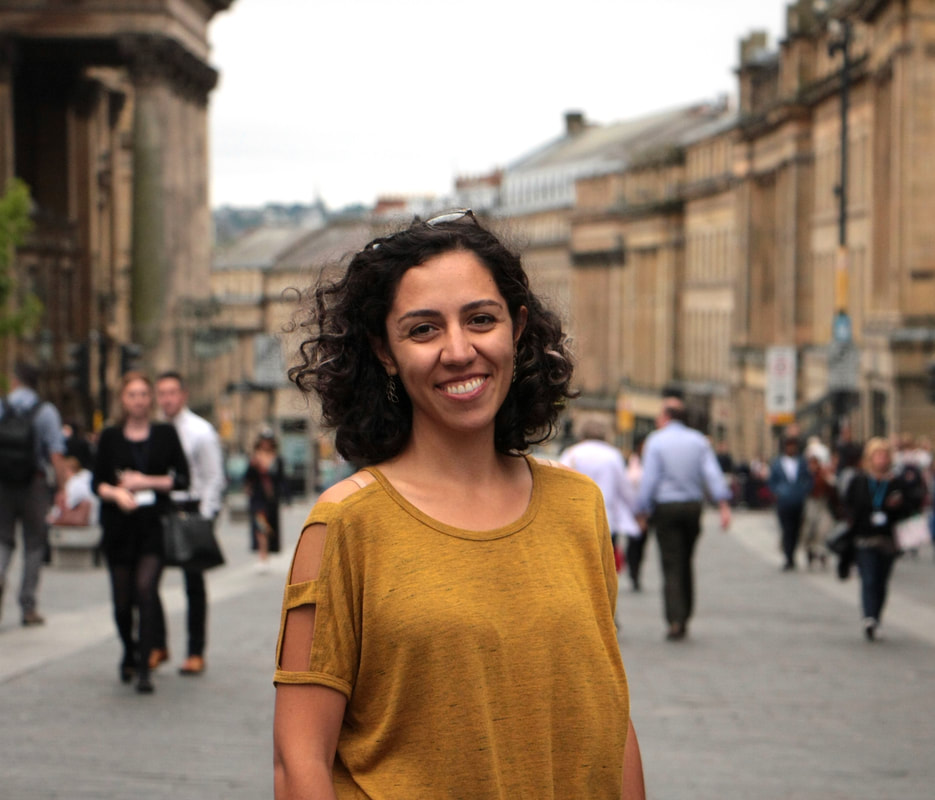| The sky has always been a source of curiosity, astonishment, and mystery for the human being. From the very early ages, humans were mesmerized by its vastness and presence; the sky was everywhere, yet completely unreachable. Some put their mythological heroes and gods up in there, some got more curious and started to look for patterns, observe closely, and record the movements of the celestial objects to analyze what is this azure dome above us. Centuries later, now not only we have 10-meter-wide eyes (mirrors) monitoring the sky on every single clear night, but also we have sent telescopes into space looking for the furthest and earliest galaxies in the history of the universe! As an astronomy postdoc at Steward Observatory and a NASA Hubble Fellow, I study early galaxies that were formed 10 billion years ago – only about 3 billion years after the Big Bang. The main questions that I try to address in my research are: How do galaxies form and evolve throughout cosmic time? How does the stellar, gas, and dust content of galaxies evolve? How do early galaxies synthesis heavy elements and enrich their inter-stellar medium? I use ground- and space-based telescopes to gather the light emitted from these galaxies, either in the form of taking images (photometry) or taking their spectra (spectrometry) in different filters. To fully understand the characteristics of a galaxy, one has to observe it in multiple wavelengths, as each component of a galaxy emits light in different wavelengths. For example, very hot, massive, young stars emit mostly in shorter wavelengths, i.e. ultraviolet, while older stars emit light mostly in the optical and near-infrared. My Ph.D. thesis and current research is mostly focused on combining the ultraviolet, optical, and infrared light of galaxies during the era of highest star formation activity in the universe, to study the galaxies’ physical characteristics, such as the rate of star formation, stellar mass, and chemical abundances. More specifically, I have recently focused on characterizing the properties of dust in early galaxies. Cosmic dust grains are solid particles with sizes of < 1 micron that exist in the inter-stellar medium inside galaxies. Dust grains absorb the optical and ultraviolet light emitted from stars and re-radiate the absorbed light at longer infrared wavelengths. Therefore, infrared emission from dust particles points to obscured stellar regions that we would otherwise miss. I use a wealth of data from various telescopes to measure the dust emission and absorption in distant galaxies and incorporate it with the unobscured ultraviolet and optical light to measure the total rate of star formation in galaxies. I am also part of the science team of the NASA’s next decade space telescope, the James Webb Space Telescope (JWST). JWST is a successor of the Hubble Space Telescope, which has a larger mirror, longer wavelength coverage, and greatly improved sensitivity compared to Hubble. With JWST we will be able to observe the first galaxies in the universe and look deep into the nearby dust clouds where stars and planets form. We expect JWST to launch in 2021. Besides research and fulfilling our curiosity to know where we are from and where we are going, an exciting aspect of my job is to share the beauties of the sky with people and show them how amazing science is. Since undergraduate years, I have been an active science promoter. Currently, I am mostly involved in two outreach programs: the Staryab website as the co-founder, and the MESCIT mentorship program as the PI. Staryab (www.staryab.com) is a bi-weekly astrophysical literature journal in Persian, my native language, written by Iranian astronomers across the world since 2014. Our goal is to present interesting research papers in a brief and simple format that is understandable to Persian-speaking undergraduate students in the physical sciences and amateur astronomers who are interested in research. The Mentorship and Education for SCIence in Tucson (MESCIT; www.ireneshivaei.com/mescit), started in February 2018, is a mentorship and math tutoring program for the Native American students, focusing on the Ha:san Preparatory and Leadership school -- a bicultural public high school in Tucson, serving the Tohono O'odham youth and Native students. Our tutors, who are selected from the University of Arizona undergraduate students, visit the school on a weekly basis to tutor math in small classes of 2-3 students. We hope this connection serves to give the high school students someone they can contact for homework help, advice, and accountability. |
|
0 Comments
Leave a Reply. |
SpotlightEach month we'll feature a Postdoctoral Scholar and their research, sharing their experiences from the UA, life in Arizona and their research interests. Archives
November 2022
Categories |

 RSS Feed
RSS Feed
